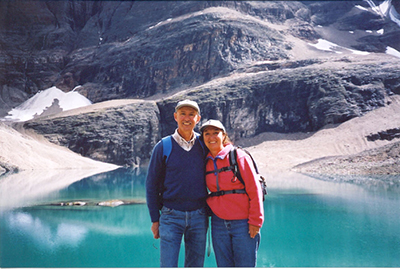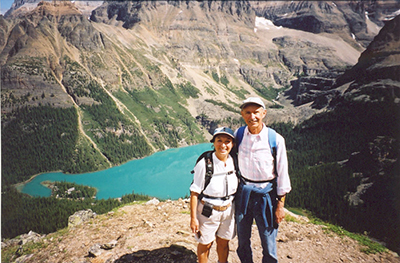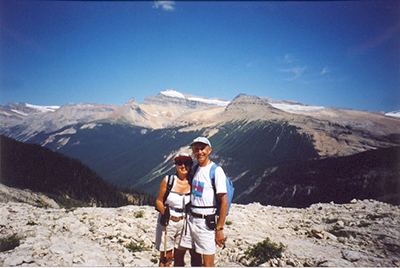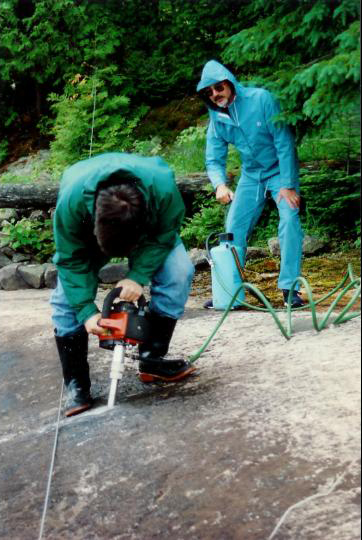David Dunlop
University of Toronto
Citation
David Dunlop has made major discoveries with far-reaching implications in geophysics through his experimental research on magnetite fine particles and by developing, with Professor Wyn Williams, the first 3D numerical model for nanostructured magnetite, predicting unusual vortex spin structures in it. The widely used tome Rock Magnetism: Fundamentals and Frontiers was co-authored by David and his wife and research partner, Dr. Ozden Ozdemir. Along with her and many colleagues, students and postdocs, David Dunlop has written over 200 research articles and two dozen chapters to elucidate why ultrafine magnetite and other iron minerals are such vital contributors to the stable memory of ancient magnetic fields in many planetary crusts and meteorites. I have known David for more than 50 years now. He has never been a solo sprinter in science. His generosity to me and a hundred other scientists, especially the younger ones, is legendary. He has made significant contributions to the development of strong research in rock magnetism internationally. He has served the Canadian Geophysical Union, AGU and our international body, the International Association of Geomagnetism and Aeronomy (IAGA), in many roles of leadership to advance geomagnetism worldwide. I will cite now some of my personal choices among David’s ingenious discoveries in magnetism. During the early days of our lunar sample research, some of us were trying to use rates of acquisition curves in a steady field of viscous magnetization versus time in a small magnetic field. But the soil did not always preserve its magnetic memory by the time one turned around! David sorted out the problem by reminding us that viscosity can work both ways: acquisition and decay. The decay constant for the iron in soils was so large that the imparted magnetization literally decayed in front of our eyes. Similarly, at a 1973 IAGA conference in Japan, David presented a heuristic model by which ocean crust at suitable depths being warmed by thermal gradient could overcome internal energy barriers and add to the stable remanent signal if the ambient temperature was not above the Curie point, of course. With his experimental acumen and legendary data sharing, David Dunlop has served the magnetic community in many ways. His time versus temperature nomograms for magnetite- and pyrrhotite-bearing rocks have been used by many colleagues to infer the original depths that the rock came from after exhumation. Because of his thorough preservation of well-characterized data magnetic techniques are now used in planetology, biomagnetism and reading paleoclimate change records in China.
— Subir K. Banerjee University of Minnesota Twin Cities Minneapolis, Minnesota
Response
A Russian colleague once said, “You don’t need a hundred rubles; you need a hundred friends.” I am profoundly honored to join previous Fleming medalists who blazed the trail in geomagnetism and planetary physics. But I wouldn’t be here today without help from many friends.
In 1962 Tuzo Wilson, about to discover transform faults and establish plate tectonics, enticed 10 young engineering physics students into geophysics. Magnetic stripes over the oceans are the signature of seafloor spreading — but how do they form and survive over millions of years? My Ph.D. supervisor-to-be Gordon West, with a few sketches, introduced me to magnetic nanoparticles and their coupled-spin domains. Only diamonds are forever, but magnetic nanoparticles run a close second.
Herein lies a puzzle. Once a second domain develops, the particle should lose its stable magnetic memory — but it doesn’t, fortunately for paleomagnetism, the quantitative record of ancient planetary magnetic fields. This puzzle of pseudo-single-domain magnetic memory has occupied me ever since. It now seems close to solution thanks to Wyn Williams’ micromagnetic modeling, initiated with University of Toronto’s first supercomputer 30 years ago.
Life is full of adventures. I studied with the giants of rock magnetism, Takesi Nagata and Minoru Ozima in Tokyo and Émile Thellier in Paris. In 1964 Subir Banerjee took an interest in my first conference presentation, kindling our lifelong friendship. Later, his Institute for Rock Magnetism made possible key experiments by our group. David Strangway helped establish our Toronto lab and gave me an entrée into lunar magnetism. Frank Stacey, on a visit to Canada, discovered my work and added references to it in his textbook. Ted Irving invited me to co-author a book, sadly never finished, and while visiting Peter Wohlfarth, the seeds were sown for another book, Rock Magnetism: Fundamentals and Frontiers.
Özden Özdemir, co-author of that book and of many seminal papers, has been the mainstay of our group. Experimentalist extraordinaire, she made visible magnetic domains in magnetite’s (110) “magic plane” in a detail never achieved before or since. In an experiment to demonstrate that magnetic stripes can survive chemical change, she spent 4 days and nights in and out of a shielded room. She has no peer.
One must teach a subject to really learn it. My students and postdocs taught me as much or more than they learned. Today, as colleagues we remain in touch. I am deeply grateful to all of you.
— David Dunlop
University of Toronto
Toronto, Ontario, Canada
Field Photos





